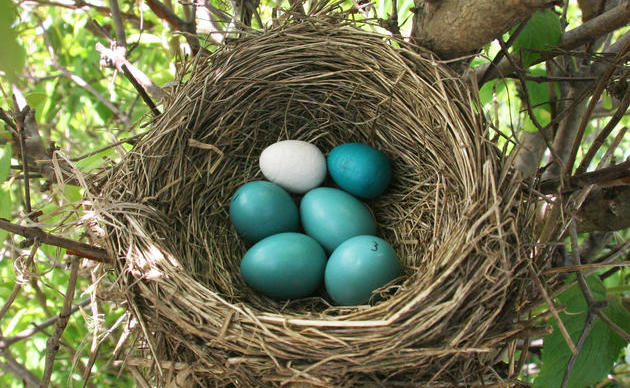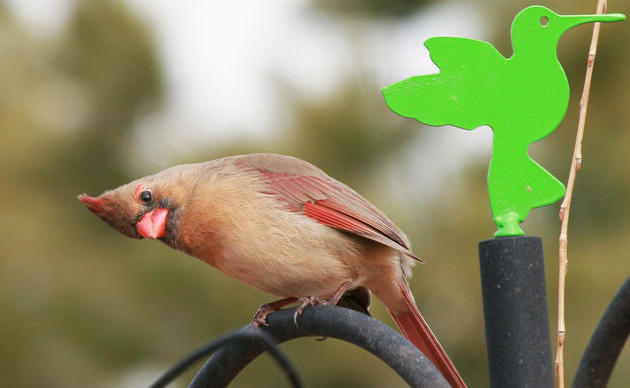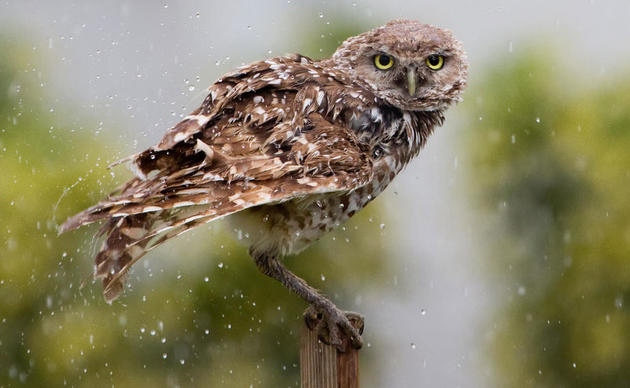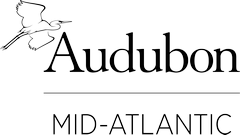Audubon Works in Central Pennsylvania
“So, it’s kind of like a big sink?” asks a Harrisburg 4th grade student, revealing that “watershed” has just become more than a vocabulary word with a definition to be memorized. The term watershed has now come to life, this student recognizing that the shape of the land and the movement of the water determine its boundaries. She now understands that it functions like a sink, and that much of the rainwater and snowmelt moving through the watershed eventually end up in the drain (meaning, a nearby stream). This sets the stage for the next activity, the Enviroscape® watershed model demonstration, which illustrates how water flowing over the land carries sediment, excess nutrients and trash directly into the local stream.
This moment – when that click of comprehension is virtually audible, and students’ eyes and mouths pop open – is one of the things that Audubon educators relish about our work. This moment can evoke a flood of exhilaration and goosebumps, allowing educators to pause and take a breath, blink, and enjoy the moments of discovery the students have.
The hands-on nature of our in-class lessons makes these Ah-Ha! moments frequent. Students are moving about the classroom (or outdoors), solving puzzles, designing habitats, drawing maps, touching beaks and talons, discussing, thinking, posing questions to each other and thinking some more. They are not just memorizing the one-dimensional circle we learned in elementary school, but rather literally taking a circuitous, realistic journey around the classroom that might involve stops in soil or plants, groundwater or rivers, oceans or clouds.
Students typically exhibit lots of Ah-Ha! moments while they’re out in the field, and enjoyment typically abounds. This enjoyment locks the learning in place, solidifying the idea that science can be fascinating and important, and likewise, fun. A few years ago, a Carlisle student wrote that he wanted to be a stream velocity scientist because that was his favorite station during the field program. Other students love getting into the stream to sample for macroinvertebrates. Still others love to sit and sketch the flowers and insects in the pollinator garden because, “I never get a chance to just sit outside. My life is too busy.”
Essential to each interaction with students is the message of empowerment - their own empowerment to make positive changes in their communities. And over time they realize that we are connected not only to our human communities, but also to our natural communities. We offer that native plants can be a bridge that ties us to clean water, healthy families and thriving wildlife.
A bird-friendly community can begin with just one or two bird-friendly households. Picking up trash on our way to school encourages others to do so. Using recyclable lunch containers can become a trend. Students are provided the opportunity to fast forward to the kind of community in which they wish to live as adults, and to start taking steps to fulfill their vision. They realize their actions matter.
And those enchanted moments when the goosebumps bloom and you know the student just “got it”? We will keep making those and enjoy every moment of them
Holly Smith
Education Project Coordinator, Harrisburg Region
Important to note: Audubon’s field programs depend on engaged communities! Community members, retirees, stay-at-home parents (etc.), as well as personnel from area NGOs, governmental agencies and local businesses are Audubon-trained and join us in the field to help lead the activities. Many hands = fun work!
If you would like to help with the York (5th & 6th grade) or Harrisburg (4th grade) programs, please contact Kelly McGinley at kmcginley@audubon.org.
If you would like to help with the Carlisle (2nd, 5th & 7th grade) programs, please contact Holly Smith at hsmith@audubon.org.
Hope to see you in the field!
How you can help, right now
Donate to Audubon
Help secure the future for birds at risk from climate change, habitat loss and other threats. Your support will power our science, education, advocacy and on-the-ground conservation efforts.
Become a Monthly Donor
Donating monthly is flexible, easy and convenient and makes you a champion birds can count on, no matter the season.




